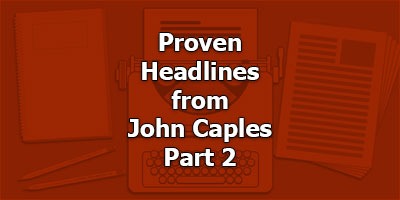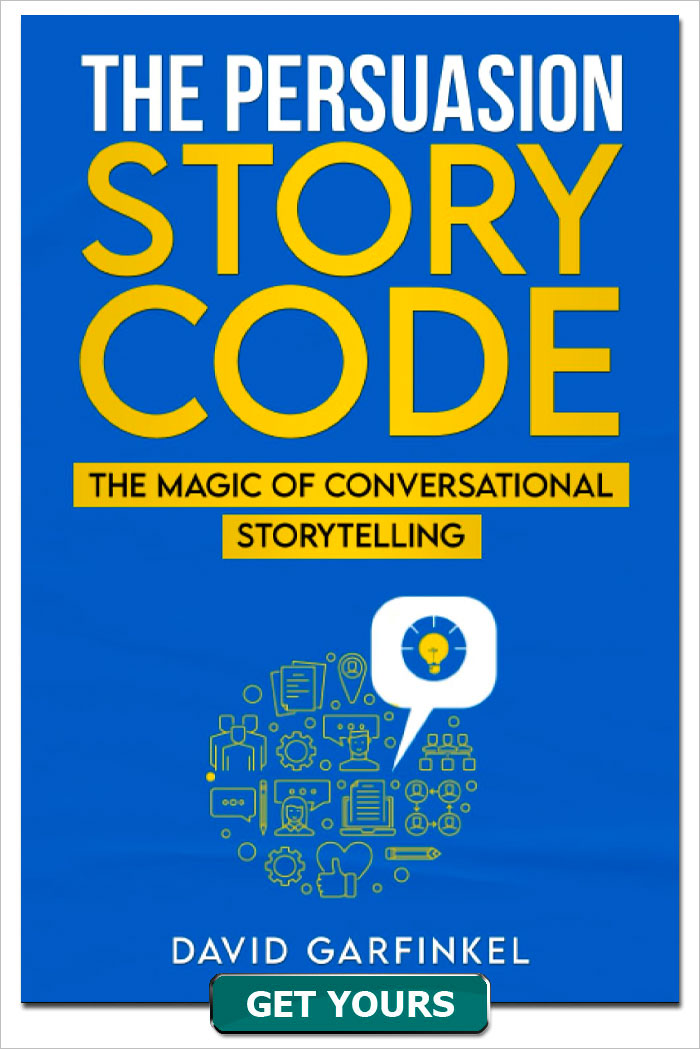Proven Headlines from John Caples, Part 2 - Old Masters Series
Published by: David Garfinkel on 09-19-2022
Tweet
OK, we’re back with part 2 of deep headline wisdom from Old Master John Caples and his book “Tested Advertising Methods,” originally published in 1932.
Last week we covered the first half of his chapter called “Twenty-nine formulas for writing headlines,” and like I said last week, this chapter is pure gold and no fat.
This week we cover the second half. There was simply too much in one chapter to cover it all in one show.
Now these formulas are simple, and in most cases you have to do the heavy lifting. They are formulas, but not templates. He shows you where to start, which is always half the battle when you’re writing anything.
So today we’re going to cover the second half of Chapter 5 in Caples’s landmark book, “Tested Advertising Methods,” 4th edition. Two groups of headline formulas in the second half of the chapter that, for me, are more fun and more interesting than the ones we covered last week.
Don’t get me wrong. The ones we covered last week, which I summarized just a moment ago, are very powerful and very effective. I just don’t think most of them offer as many creative possibilities, that will still get results, as the ones we’re going to cover today.
And to be sure, your headline does not need to be quote-unquote creative. It just needs to be fresh and interesting enough to work.
But, after all, if you can have a little more fun coming up with it—no harm in that!
To emphasize how important headlines are and what a tightrope you’re walking with them, let’s start with these powerful fourth paragraphs from the Chapter 3 “Right and Wrong Methods of Writing Headlines” in “Tested Advertising Methods”:
Remember that the reader’s attention is yours for only a single, involuntary instant. He will not use up his valuable time trying to figure out what you mean. He will simply turn the page.
Do not run advertisements without headlines. Some advertisers do this in the mistaken notion that it is smart, modern, and sophisticated. Because they do not test their advertising, these advertisers do not realize that about the only person who reads their copy is the proofreader, who is paid to read it.
---
And this is something you should commit to memory, what he says next:
--
You can’t expect people to read your message unless you first give them in the headline a powerful reason for reading it. To run an advertisement without a headline is like opening a store without hanging out a sign to tell people what kind of store it is. A few customers may come in the store, but many prospective customers will be lost.
If there is any exception to this rule, it is where an excellent picture of the product is used. For example, a beautiful, four color picture of delicious peaches with the name Del Monte at the bottom of the page conveys a message without a headline.
Here are the 15 formulas we cover today:
1. How to
2. How
3. Why
4. Which
5. Who Else
6. This
7. Wanted
8. Advice
9. Use a testimonial-style headline
10. Offer the reader a test
11. Use a one-word headline
12. Use a two-word headline
13. Warn the reader to delay buying.
14. Let the advertiser speak directly to the reader
15. Address your headline to a specific group or customer
Keywords: copywriting headline templates









